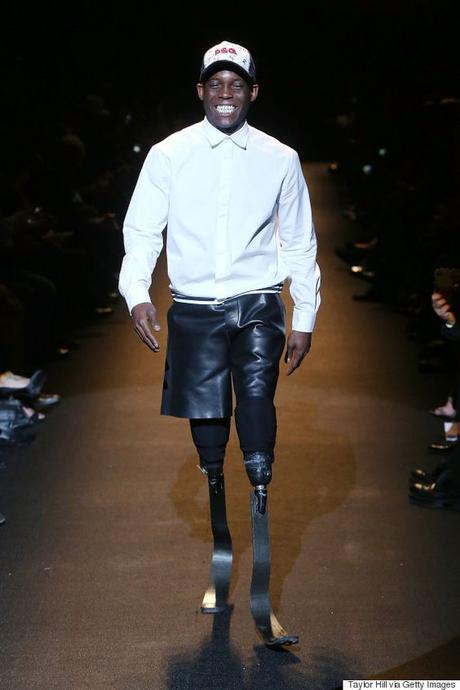A survey by Leonard Chesire in 2019 found that 75 percent of disabled people felt that the fashion industry was not meeting their needs. A shocking 96 percent said they did not feel represented. Yet, with 1 in 4 Americans living with disabilities, the need for the fashion industry (and businesses operating within it) to stop and reassess their inclusivity efforts is undeniable. Now, over two years later, the question remains: is enough being done to represent the differently-abled community in the fashion industry? While the answer is up for debate, and there have been some positive improvements like Yan Hon's equal fashion pursuits, one thing is certain: the need for representation is valid.

Why disability representation is important in the fashion industry
Estimates from the World Health Organization put the disabled population at 15 percent, the largest minority population. The community is also not mutually exclusive, meaning anyone can become a member of the disabled community at any time of their life. So while the figures may illustrate the number of adult consumers with disabilities, there is also a significant percentage of younger customers living with disabilities that impacts fashion purchases. For instance, approximately 10,000 babies are born with cerebral palsy annually and, as they grow, will require adaptive clothing that is compatible with a wheelchair, mobility aids, and feeding tubes.
However, the need for representation is about much more than catering to a significant chunk of the population. It is also centered around giving equal consideration to all consumers- regardless of their abilities or challenges. Making more of an effort to portray disabled consumers in fashion, whether on the walkway or in the design room, enables a greater level of authenticity and mirrors a true portrayal of what our communities look like. So while it may be good for business, it is also about breaking the historical taboos and misconceptions of what fashion looks like- and who its target markets should be.
Businesses are missing out on a valuable significant market
From a business perspective, the lack of disability representation in the fashion industry means many fashion retailers and designers are missing out on key marketing/sales opportunities. In short, fashion retailers are losing money by forgetting or ignoring disabled customers. According to recent reports, the disabled population had a spending power of $490 billion in the U.S. alone or a quarter of the adult consumer population. Another survey by Return on Disability found that people with disabilities control $645 billion in disposable income alone. In fact, the adaptive clothing market is predicted to account for $4,226.1 million by 2027.

Brands taking the cue from the disabled population
There have been some notable efforts by small and larger fashion brands like Nike, ASOS, and Tommy Hilfiger in recent years. This positively reinforces the belief that fashion brands and businesses need to be catering to people with disabilities in their clothing design and operations. Some brands making adaptive clothing include Unhidden Clothing, Miga Swimwear, and the San Diego-based shoe brand, Friendly Shoes. Some brands like Care + Wear also work to support and bring awareness to the disabled community by donating 10 percent of their profits.
Education remains the key to unlocking better representation
However, even though there has been some progress in the fashion sector, there remains a long way to go. It all begins with understanding the different challenges faced by people with disabilities when it comes to fashion. Working alongside disabled individuals and charities can help to get a better idea.
In many ways, this type of representation is expected and needed, so it is good to see that there are brands making an effort to include the disabled community as well in their production lines.
Fraquoh and Franchomme
P.S. We want to hear from you! What do you think about disability representation? Do you think there is enough of it? Should there be more or less? Share your feedback, questions or thoughts in the comments below! For more articles on style, fashion tips and cultural insights, you can subscribe to Attire Club via e-mail or follow us on Facebook, Twitter or Instagram!

